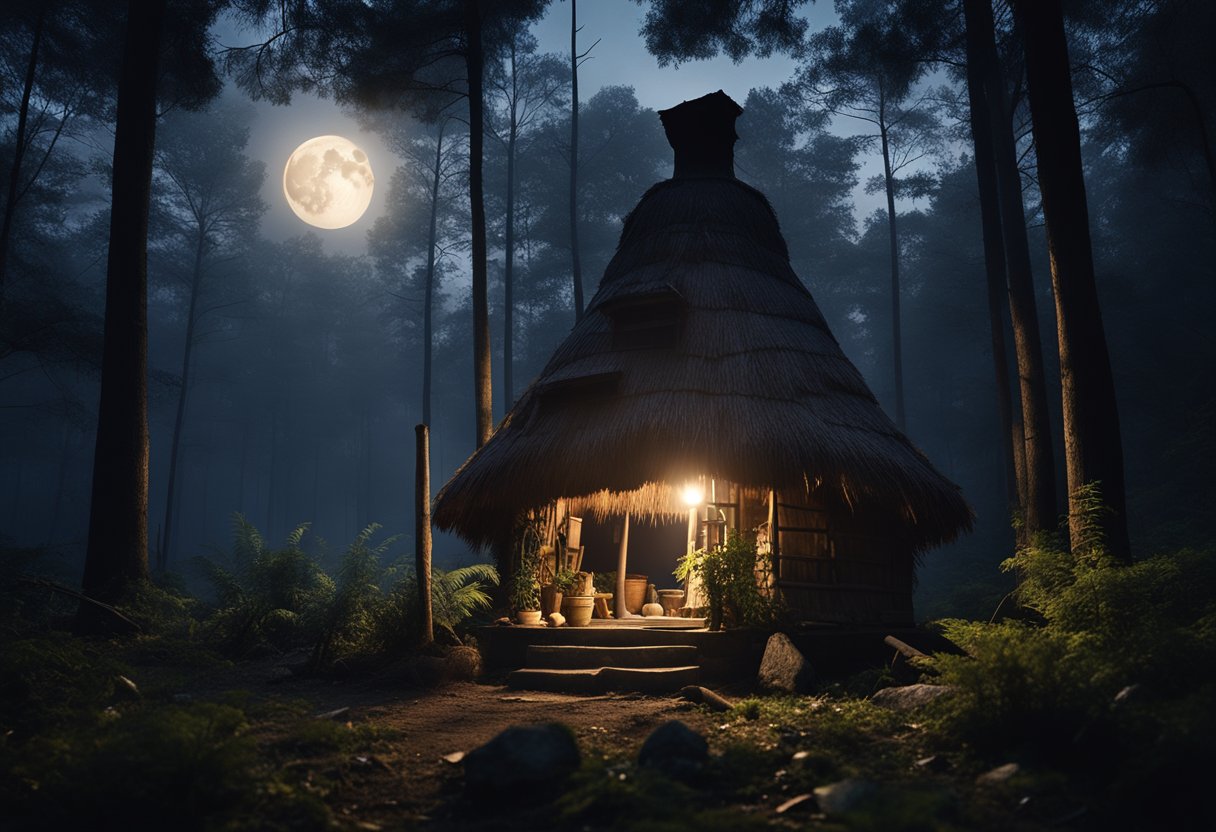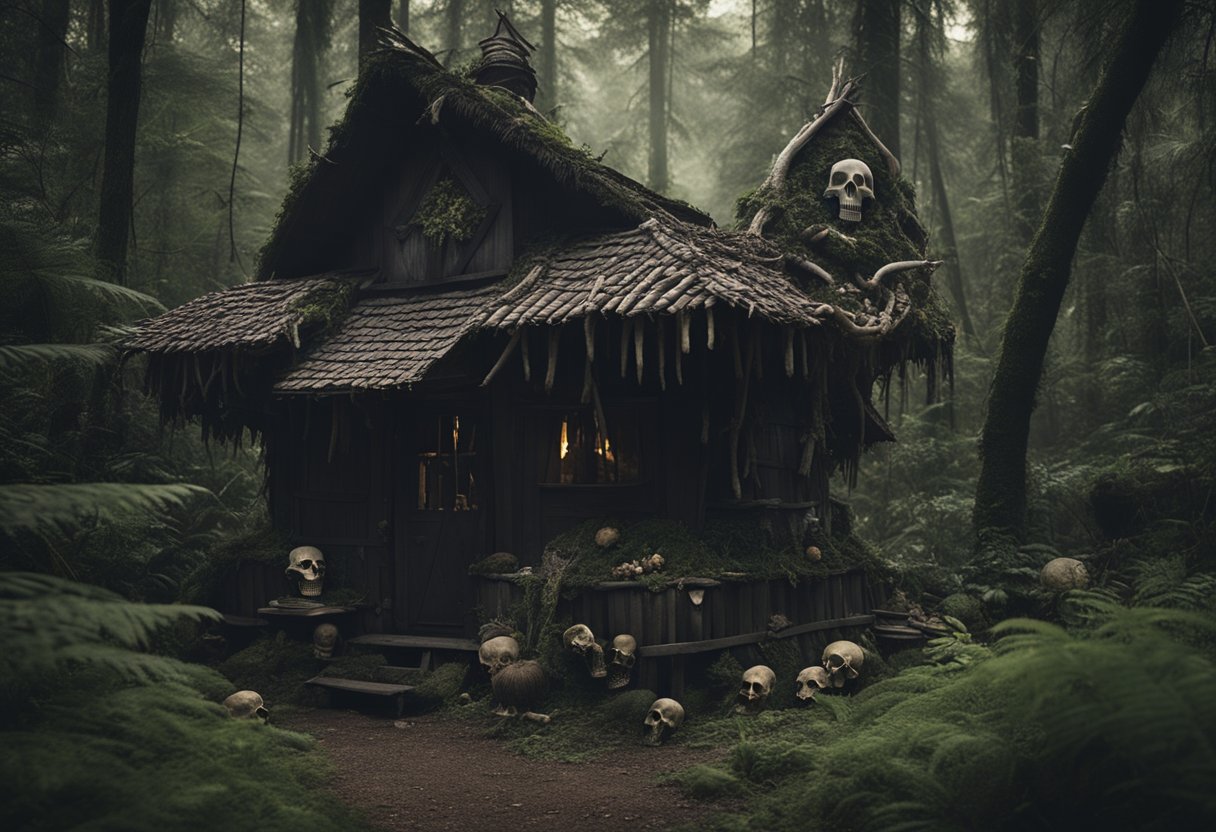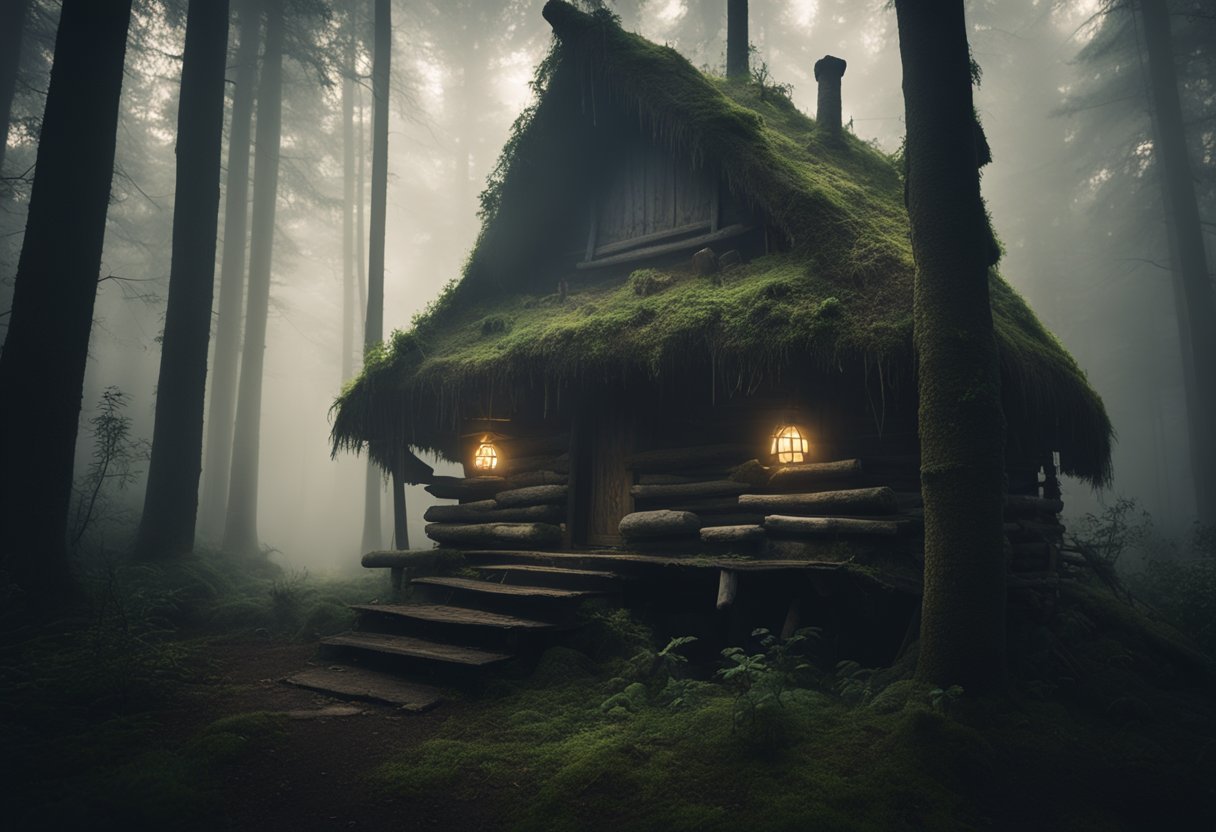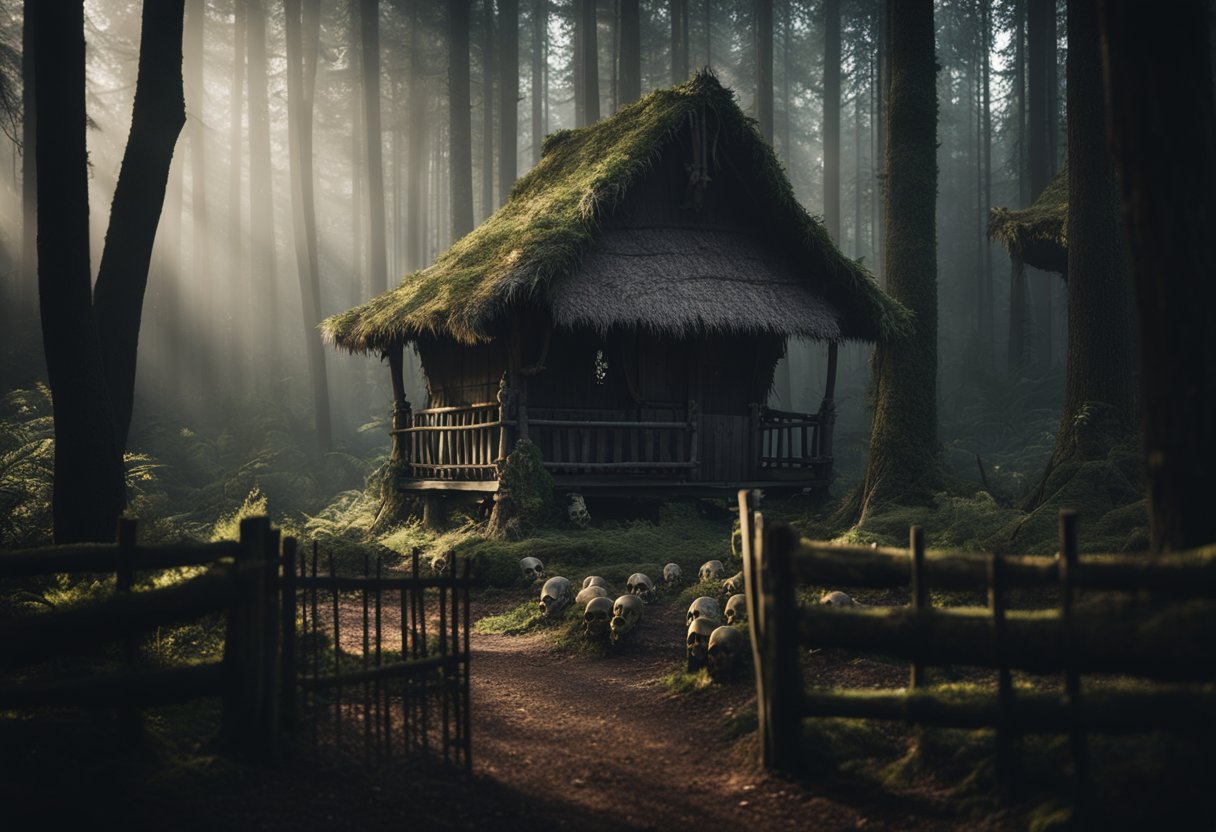Russian Folklore: Unveiling the Mysteries of Baba Yaga and Other Tales

Updated On: April 17, 2024 by Aya Radwan
Stepping into the enigmatic world of Russian folklore is akin to entering a dense forest of myth and mystery where the lines between fear and fascination blur. At the heart of this rich tapestry lies Baba Yaga, a character whose very name conjures up images of a fearsome witch dwelling deep within the Slavic woods. Unlike the clear-cut roles of Western fairy-tale characters, Baba Yaga embodies the capricious nature of folklore itself, sometimes acting as a benevolent guide, at other times as a malevolent force.
Her fluidity as a symbol continues to captivate audiences, reflecting the dualities of nature and human experience. Beyond this iconic figure, Russian folklore brims with tales that explore the triumphs and tribulations of heroes, the cunning of villainous creatures, and the wisdom held within every story passed down through generations. The narrative landscape is diverse and storied, resonating with themes that transcend its origin to touch upon universal truths, all of which still echo in modern reinterpretations across various media.
Origins of Russian Folklore

Russian folklore is a tapestry woven from the historical and cultural threads of the Slavic people. Folklore encompasses the myths, tales, and traditions passed down through generations, often orally. The heart of this folklore pulses with rich narratives that offer insight into the ancient Slavic way of life.
Before the advent of the 19th century, much of Russia’s traditional lore remained undocumented, shared in communal settings and through family lineages. It wasn’t until researchers like Alexander Afanasyev took on the mantle to collect and catalogue these stories that the wealth of Russian folklore truly came to light. Afanasyev’s work was seminal in preserving the oral histories of the Russian people, comparable to the Grimm brothers’ efforts in Germany.
The history of Russian folklore is inevitably intertwined with Slavic gods and the pantheon of deities that governed every facet of early Slavic life. These gods are remnants of a pagan past before the introduction of Christianity, revealing a worldview deeply connected to nature and the elements.
Unlike Roman mythology, well-documented by historians like Livy and poets such as Ovid, much of Slavic mythology comes to us without the original religious texts. Instead, the beliefs and practices were preserved in folk customs, festivals, and cultural consciousness, echoing the veneration of natural forces and ancestral spirits.
Our understanding of the origins of Russian folklore is thus a reconstruction of these fragments; a puzzle pieced together from the artefacts of a bygone era. Through the collected tales and scholarly work, we gain a window into our Russian ancestors’ lives, beliefs, and imaginations.
The Character of Baba Yaga
Baba Yaga is a multifaceted figure deeply rooted in Slavic folklore, particularly prevalent in Russian fairy tales where she embodies the ambiguity of nature as both a helper and a hinderer.
Depictions in Literature
Literary depictions of Baba Yaga paint her as a witch notorious for her bony legs and dwelling within a hut atop chicken legs. She is often portrayed riding through the air in a mortar, steering with a pestle. These tales describe her home, encircled by a fence crowned with human skulls, suggesting her link to death and the macabre. In Russian folklore, the name ‘Baba Yaga’ inspires reverence and fear, synonymous with the crone aspect of the witch archetype. Notable tales, like the story of Morozko, reveal her complexity—wavering between the role of a wise woman who guides the protagonist and an evil figure who poses substantial threats.
Symbolism and Meanings
As a character, Baba Yaga symbolises the wild and untameable aspects of nature. She is at once a symbol of death and rebirth, encapsulating the duality of nurturing and destructive forces. The elusive nature of her character, sometimes guiding the lost and at other times consuming those who cross her path, speaks volumes about the harsh realities of life and nature’s indifferent whims.
In Slavic folklore, Baba Yaga can be considered a representation of female empowerment and independence, challenging the traditional roles assigned to women in folk narratives. Her name, bearing the weight of centuries of storytelling, is intertwined with the cultural consciousness of Slavic peoples, embodying the deep-seated fears and respect for the forces beyond our understanding.
The Witch’s Abode and Artefacts

In Russian folklore, Baba Yaga is a testament to the enigmatic and feared. Her dwelling and the items associated with her are steeped in symbolism, each telling a part of the mythos surrounding her character.
The Chicken-Legged Hut
Baba Yaga’s abode is as bizarre as iconic—the infamous chicken-legged hut. Found deep within the woods, this unique house stands atop fowl’s legs, capable of movement and rotation. The chicken-legged hut is as much a character as the witch herself, imbued with supernatural ability and reflecting the mystical nature of the Slavic forests in which it hides. As you imagine it dancing eerily on its spindly legs, the image conjures a sense of both whimsy and dread, emblematic of Baba Yaga’s dual nature.
Mortar and Pestle as Symbols
Mortar and pestle are fundamental symbols tied to Baba Yaga, representing her role as a connector of worlds. These artefacts are not mere tools for her; they are her means of transport and power sources. The mortar allows her to navigate the skies or the forest grounds, while the pestle is wielded to erase traces of her passage, preserving the secrecy of her comings and goings. Through these artefacts, the witch traverses the mundane and the magical, highlighting her dominion over the boundless realms of fable and fear she inhabits.
Key Folktales Featuring Baba Yaga
In the rich tapestry of Russian folklore, the figure of Baba Yaga stands out prominently, featuring in numerous stories where she plays varying roles from antagonist to helper. Her depiction varies widely, oscillating between the terrifying and the instructive. Here, we recount her role in two seminal folktales.
Vasilisa the Beautiful
In the tale of Vasilisa the Beautiful, we encounter Baba Yaga in her more fearsome guise. Young Vasilisa finds herself sent to the witch’s hut on Fowl’s legs, tasked with fetching a light. Known for her links to Vasilisa the Wise, her wisdom here is overshadowed by the challenges she sets for Vasilisa, which the heroine must overcome. Baba Yaga’s dwelling is surrounded by a bone fence topped with human skulls, echoing the witch’s reputed cannibalism. Vasilisa‘s triumph comes not from strength but through her kindness and the magical protection of a doll her mother gave, reflecting the folkloric value placed on integrity and resourcefulness.
Ivan Tsarevich
In a different vein, the legend of Ivan Tsarevich portrays Baba Yaga as a somewhat ambivalent character. In this tale, Ivan, a quintessential hero, encounters the witch in his quest. Baba Yaga tests Ivan‘s mettle through several trials, straddling the line between guiding and leading him astray. Her actions are complex, at times hindering and in others assisting Ivan on his journey, illustrating the multifaceted nature of wisdom and challenge in folklore narratives.
Through the stories of Vasilisa and Ivan, Baba Yaga emerges as a compelling figure, invoking fear and awe. These tales underscore her role in the folklore tradition, portraying the intricate balance between obstacle and mentor she often represents.
Transcending Folklore: Baba Yaga in Modern Media

Baba Yaga, the iconic figure from Slavic folklore, has not been confined to the tales of old; instead, she flourishes in contemporary literature and visual media, embodying cultural symbolism and intrigue.
Baba Yaga in Literature
Within literature, Baba Yaga has traversed from her folkloric routes to become a multifaceted character in various narratives. Her influence is poignant in books ranging from children’s literature, where she often retains her enigmatic persona, to adult fiction that reinterprets her role with nuanced complexity. Notably, she’s depicted with compelling depth in modern fantasy literature, illustrating the extent of her reach beyond traditional folklore.
Baba Yaga in Film and Television
Baba Yaga’s legacy has been direct and subtly influential in film and television. She has been portrayed in animation, feature films, and series that reflect her duality as both a fearsome antagonist and a source of wisdom. The character’s archetypal nature has also inspired roles in popular media, such as the clandestine world of John Wick, where the titular character is nicknamed after this formidable witch. Furthermore, in the Hellboy series, Baba Yaga’s portrayal stays closer to the original tales, entrapping heroes and villains with her ambiguous motivations and supernatural powers. These adaptations highlight her continual evolution and enduring relevance in modern storytelling.
Slavic Folklore’s Influence on Global Culture
Slavic folklore, with its rich tapestry of mythical beings and epic narratives, has left an indelible mark on global culture. Baba Yaga, the enigmatic witch from Eastern European tales, is a prime example of this influence. Her stories have transcended regional boundaries, offering a glimpse into the complex Slavic moral universe where characters are multifaceted and embody light and shadow.
The bewitching figure of Baba Yaga, known for her hut on chicken legs and her ambiguous nature, has permeated art and literature beyond Slavic countries. She embodies a character that is sometimes a malevolent force and, at other times, a wise crone. This duality reflects the Slavic understanding that life is not simply black or white but often exists in shades of grey.
The spread of Slavic folklore can be observed in various cultural expressions, where elements from Polish and other Eastern European narratives have been woven into the fabric of global art and storytelling. For instance, Polish folklore, rich with its unique myths and legends, has contributed characters and motifs to a broader cultural conversation, resonating with audiences who seek connections with ancient wisdom.
Interestingly, the influence extends beyond Europe, as parallels can be found between Slavic myths and those from other ancient cultures. For instance, linguistic studies have discovered links between Sanskrit and Slavic languages, suggesting a deep, historical connection that may be reflected in shared mythical archetypes.
Exploring folkloric traditions, we observe the universal themes of heroism, nature’s power, and the human condition. These narratives travel across borders, inspiring new interpretations and artistic creations that captivate imaginations worldwide.
Mythological Creatures and Beings Related to Baba Yaga
In the tapestry of Russian folklore, Baba Yaga interacts with various mythological entities, each encompassing aspects of the mystical and the guardianship of nature.
The Domovoi
A guardian spirit of the household, the Domovoi is a core figure in Slavic mythology. These creatures are traditionally believed to protect the family and animals. Usually benevolent, a Domovoi can become troublesome if neglected, representing the delicate balance in respecting and acknowledging the unseen protectors in lore.
The Firebird
The Firebird is a majestic and magical creature with feathers that glow like smouldering embers. Embodied in many tales, this enigmatic bird is often sought after for its beauty and the blessing it brings. However, capturing the Firebird presents a daunting challenge, filled with trials testing the virtue and courage of those who dare to pursue this radiant avian marvel.
Crossover of Mythologies: Comparing Slavic to Other Traditions
Before we delve into specific mythological comparisons, we must recognise the common themes that often emerge across diverse cultural landscapes. In particular, many tales of gods and heroes show an intriguing resemblance despite originating from geographically and culturally distant societies.
Norse and Slavic Parallels
In our exploration, we’ve noticed remarkable similarities between Norse and Slavic mythologies, especially regarding the representation of deities and the natural world. Both traditions venerate a World Tree, symbolising the cosmos’ structure and connecting different realms of existence. The Norse call this tree Yggdrasil, whereas, in Slavic accounts, it is often simply referred to as the World Tree without a specific name.
A particularly striking parallel can be drawn between the Norse god Thor and the Slavic god Perun. Both are associated with thunder and are considered protectors against evil. Thor wields his mighty hammer, Mjölnir, while Perun commands the axe, indicating his role as the highest god of the pantheon in certain Slavic traditions. The depiction of these figures demonstrates their cultures’ deep respect for the forces of nature and their attributes of strength and protection.
Greek and Slavic Influences
Greek and Slavic mythologies often cross paths, particularly in portraying their respective gods and goddesses. For instance, the Greek tale of Persephone resonates with Slavic stories of goddesses who personify nature and the changing seasons. Persephone’s descent into the underworld and subsequent return symbolise the earthly cycle of death and rebirth—a theme mirrored in Slavic lore, where such deities often control the earth’s vitality and agricultural wellbeing.
The influences of these mythologies can even be felt within other traditions, such as Roman mythology, which borrowed and adapted from Greek beliefs, later reaching Slavic territories during the spread of the Roman Empire. Shedding light on these affinities helps us better understand how myths travel and transform across borders and through time. Moreover, when we study localised adaptations, such as those within Polish folklore, we can appreciate the unique flavours of the myth that each culture contributes to a broader collective narrative.
Feminine Archetypes in Russian Fairy Tales
Russian fairy tales are rich with character archetypes that speak to their time’s cultural values and social norms. Among these, feminine characters like the witch and the heroine stand out for their complex attributes and roles within the narratives.
The Villainous Witch
The witch archetype in Russian folklore often embodies the fears and supernatural elements of the tales. She is typically portrayed as a malevolent figure with magical powers that she uses to thwart the protagonists’ goals. Baba Yaga is the quintessential representation of this archetype. Renowned for her unpredictability, Baba Yaga is as likely to aid a character as she is to hinder them. This character blurs the lines between ally and antagonist, reflecting the complexities of human nature.
One can see the exploration of the witch through the potent imagery of Baba Yaga’s hut, which stands on chicken legs and moves of its own volition. Baba Yaga is typically depicted as an old, haggard woman, illustrating the societal attitudes towards age and aesthetics.
Equally significant is the figure of the stepmother, who often acts as the instigator of the hero or heroine’s trials. While not inherently magical, the stepmother’s cunning and often cruel intentions place her firmly within the category of the villainous witch. Her role is deeply tied to familial dynamics and the perils of disrupted domesticity.
The Heroine
In contrast to the villainous witch, the heroine of Russian fairy tales is the beacon of virtue, bravery, and kindness. Vasilisa the Beautiful is a clear exemplar of this archetype. In her eponymous tale, Vasilisa‘s purity of heart and steadfastness of spirit help her navigate the dangers Baba Yaga presents. Vasilisa‘s journey is often one of self-discovery and growth, showcasing the strength and resourcefulness of her character.
The heroines in these tales frequently overcome significant adversity, with their goodness and moral fortitude often being their greatest assets. They navigate their circumstances with grace and intelligence, and through their adventures, they often bring about their happy endings. Their stories also reflect societal ideals of femininity at the time, promoting values of passivity and kindness within the patriarchal context.
Throughout their ordeals, such characters not only survive but emerge empowered. Rather than relying solely on external rescue, characters like Vasilisa utilise their wit, exhibiting a commendable level of autonomy and agency within the tales. As embodiments of perseverance, the heroines’ tales serve as conduits for imparting moral lessons to their audience.
The Linguistic Legacy of Baba Yaga in Russian Language
In Russian folklore, Baba Yaga is a figure shrouded in mystery and magic. Her name itself is deeply etched into the Russian language and culture. Let us explore how this archetype influences the linguistic landscape.
Firstly, ‘Baba’ usually means grandmother or old woman, hinting at wisdom and age. It parallels babushka in Russian, confirming a nurturing yet authoritative role in family and society. This duality of Baba Yaga’s fearsome and kind character widens the semantic field of ‘baba’ within the language.
‘Yaga’ does not have a clear etymology, which only adds to the enigma. However, this name has become synonymous with the qualities attributed to the folkloric character – someone who is both formidable and wise.
Baba Yaga’s influence also appears in expressions and sayings, reflecting deep ties with Slavic mysticism and nature. Her name evokes emotions from reverence to fear, and she is utilised in storytelling and teaching life lessons within Russian culture.
Furthermore, our linguistic appreciation must also be credited to Mikhail V. Lomonosov. Known as the father of Russian science, he influenced modernising the Russian language. Under his influence, folklore like Baba Yaga would have been preserved and integrated into educational contexts, ensuring its passage through generations.
In summary, Baba Yaga is not just a figure-skimming the surface of tales told in the cold of night; she is deeply rooted in the essence of the Russian language and cultural identity, providing a lens through which we can appreciate the richness and complexity of Russian grammar, vocabulary, and culture.
Interpreting Baba Yaga: Psychological and Anthropological Views

In our examination of Baba Yaga, we find a figure ripe with psychological and anthropological significance. This enigmatic character from Russian folklore embodies the complex interplay of good and evil, often depicted as a witch with the capacity for cruelty and kindness. Anthropologically, she represents a conduit to understanding Slavic culture and mythology.
From a psychological standpoint, Baba Yaga can be seen as a symbol of the human subconscious, embodying the anger, pain, and wisdom that dwell within. Her actions in the tales—sometimes helpful, sometimes malevolent—reflect the dual nature of the psyche. The ambiguous mother trope she often falls into invites a nuanced interpretation of her role, per the insights from JSTOR.
- Wit:
- Demonstrated by her challenges to protagonists.
- Wisdom:
- Offers guidance, symbolising life’s brutal but vital lessons.
- Evil:
- Manifested in her terrifying demeanour and tests.
- Culture & Mythology:
- A pivotal figure in understanding Slavic beliefs and rituals.
- Kindness vs Anger:
- Reflects human nature’s capacity for nurture and wrath—often unpredictable in her responses.
Individually, we may interpret Baba Yaga as an archetype that challenges the growing individual, as supported by an analysis found in Springer. Her presence in folklore hints at the ancestral understanding of life’s complexities and the societal need to personify the various aspects of nature and human emotion. The multiplicity of her image in folklore attests to the rich tapestry of human psychology as intricately woven into cultural narratives.
Frequently Asked Questions
In this section, we uncover some of the most intriguing aspects of Russian folklore centred around the enigmatic figure Baba Yaga and other remarkable entities from Slavic myth.
Who is Baba Yaga, and what is her significance in Russian mythology?
Baba Yaga is a formidable figure in Russian mythology, often depicted as a witch with supernatural powers. She embodies the essence of the ambiguous nature of folk characters, capable of helping and hindering those who encounter her.
What are the common characteristics of Baba Yaga’s house in folk tales?
The house of Baba Yaga is typically described as standing on chicken legs, with the ability to move and turn at her command. Its ambulatory nature emphasises the witch’s connection with the wild, untamed forces of nature.
How does Baba Yaga compare to other supernatural figures in global folklore?
Baba Yaga stands out amongst global folklore entities due to her association with benevolence and malevolence, akin to Mother Nature symbols worldwide. Her portrayal fluctuates between a nurturing force and a representation of darker, unpredictable aspects of the world.
What are some notable stories or tales involving Baba Yaga?
Many tales feature Baba Yaga, with Vasilisa the Beautiful being a prominent one wherein the young protagonist encounters the witch. Baba Yaga’s stories often serve as cautionary tales and lessons about bravery and resourcefulness.
How has Baba Yaga’s image evolved in modern interpretations of folklore?
In modern interpretations, Baba Yaga has transformed from a frightening figure into a multifaceted character embodying female empowerment and independence, serving various narrative roles from villain to sage mentor.
What are the most iconic creatures or characters from Russian folklore besides Baba Yaga?
Aside from Baba Yaga, Russian folklore is rich with beings like Koschei the Deathless and the Firebird, creatures that capture the mystical and moral complexity of the culture’s mythological tapestry. These characters play crucial roles in the folkloric landscape, reflecting deep-seated societal values and fears.






